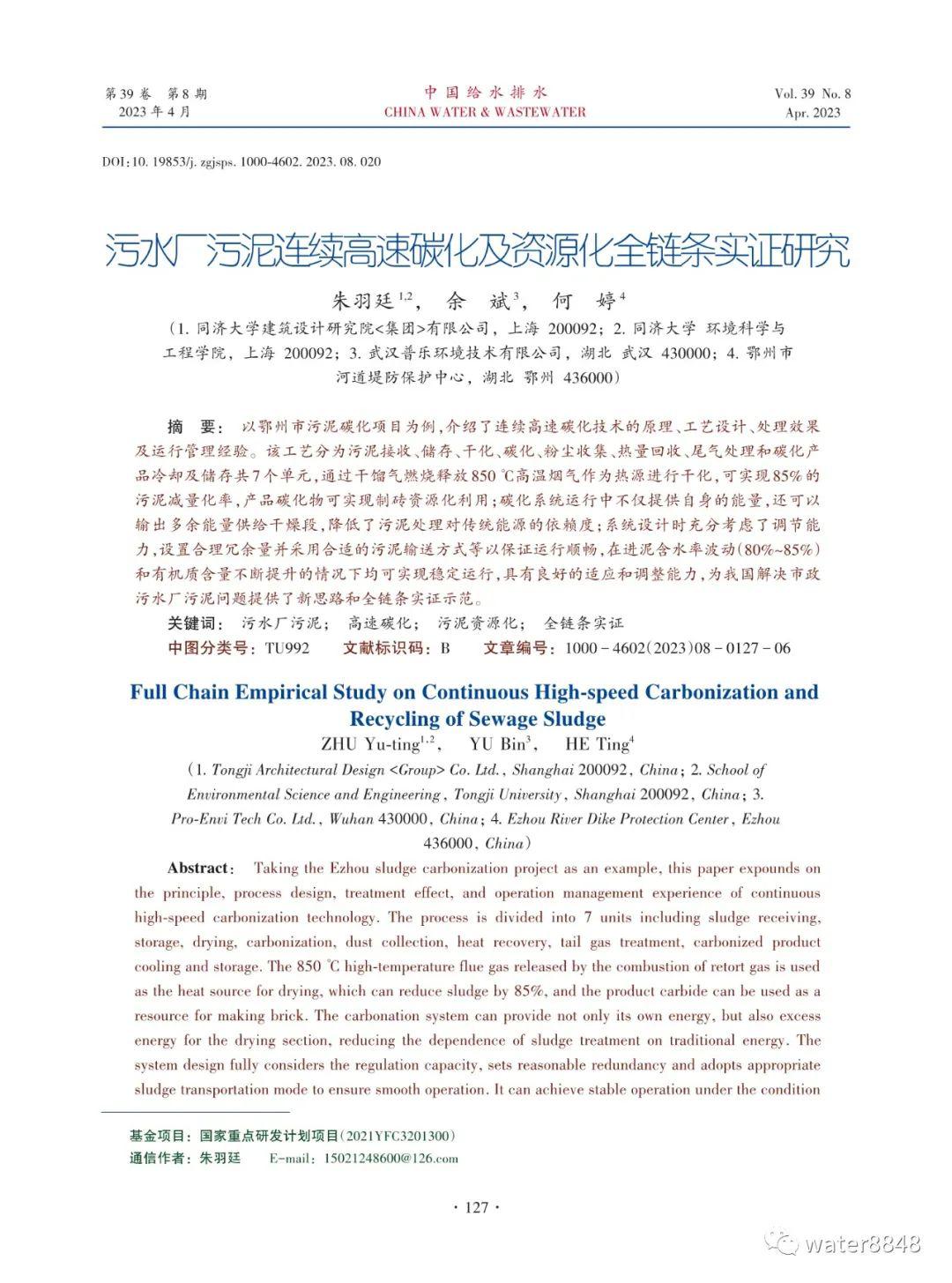关键词: 污水厂污泥; 高速碳化; 污泥资源化; 全链条实证 Keywords: sewage sludge; high-speed; carbonization; sludge recycling; full chain empirical study
关键词:
污水厂污泥; 高速碳化; 污泥资源化; 全链条实证
Keywords:
sewage sludge; high-speed; carbonization; sludge recycling; full chain empirical study
摘要:
以鄂州市污泥碳化项目为例,介绍了连续高速碳化技术的原理、工艺设计、处理效果及运行管理经验。该工艺分为污泥接收、储存、干化、碳化、粉尘收集、热量回收、尾气处理和碳化产品冷却及储存共7个单元,通过干馏气燃烧释放850 ℃高温烟气作为热源进行干化,可实现85%的污泥减量化率,产品碳化物可实现制砖资源化利用;碳化系统运行中不仅提供自身的能量,还可以输出多余能量供给干燥段,降低了污泥处理对传统能源的依赖度;系统设计时充分考虑了调节能力,设置合理冗余量并采用合适的污泥输送方式等以保证运行顺畅,在进泥含水率波动(80%~85%)和有机质含量不断提升的情况下均可实现稳定运行,具有良好的适应和调整能力,为我国解决市政污水厂污泥问题提供了新思路和全链条实证示范。
Abstract:
Taking the Ezhou sludge carbonization project as an example, this paper expounds on the principle, process design, treatment effect, and operation management experience of continuous high-speed carbonization technology. The process is divided into 7 units including sludge receiving, storage, drying, carbonization, dust collection, heat recovery, tail gas treatment, carbonized product cooling and storage. The 850 ℃ high-temperature flue gas released by the combustion of retort gas is used as the heat source for drying, which can reduce sludge by 85%, and the product carbide can be used as a resource for making brick. The carbonation system can provide not only its own energy, but also excess energy for the drying section, reducing the dependence of sludge treatment on traditional energy. The system design fully considers the regulation capacity, sets reasonable redundancy and adopts appropriate sludge transportation mode to ensure smooth operation. It can achieve stable operation under the condition of fluctuation of sludge moisture content (80%-85%) and continuous improvement of organic matter. It has good adaptability and regulation capacity, and provides a new idea and full chain empirical study for solving the sludge problem of municipal sewage plants in China.






